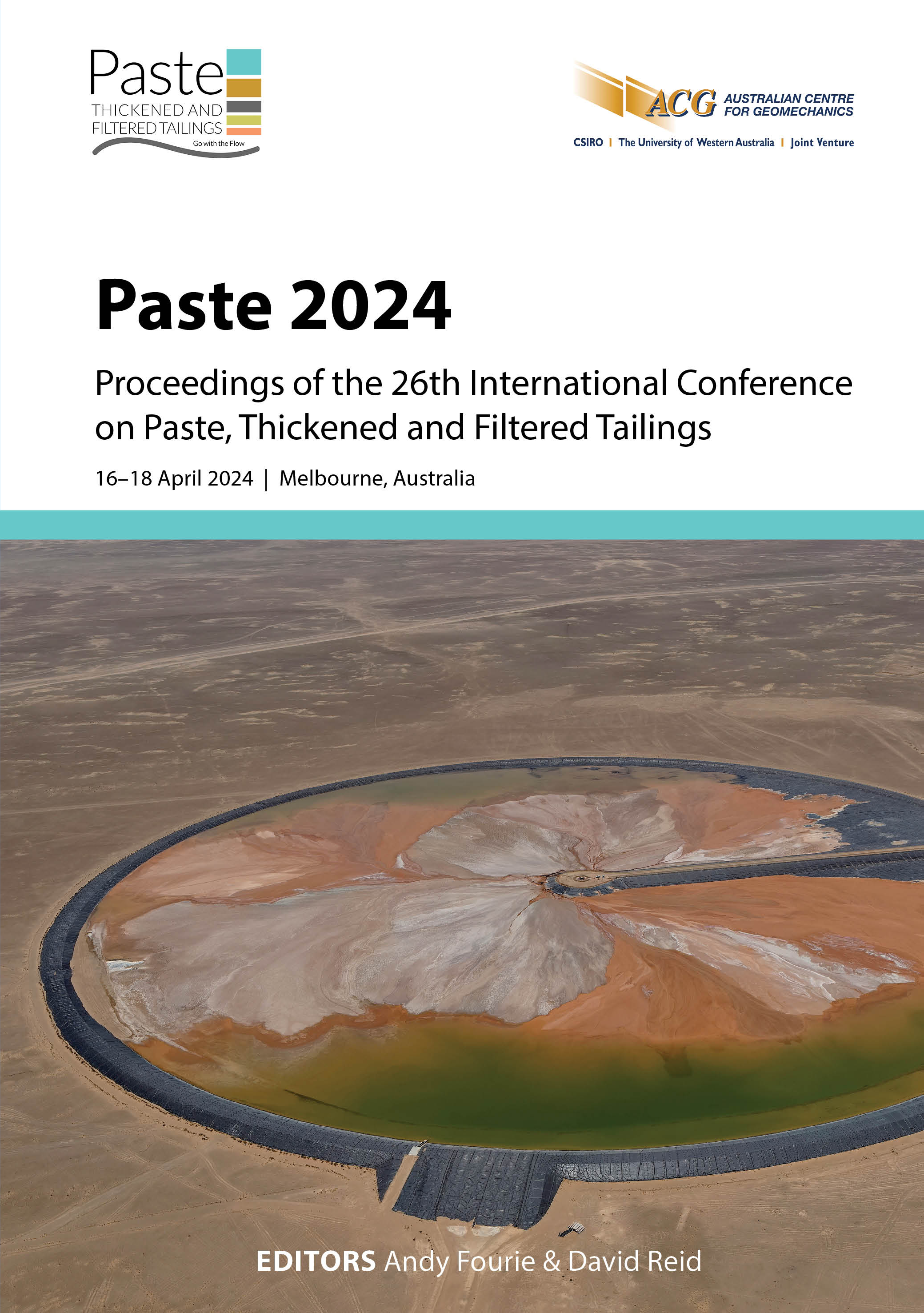Reducing CO2 accumulation in cemented paste backfill with optimised solids–cement equivalency and chemical admixtures

|
Authors: Sato, K; Salter, R; Zajac, AD |
DOI https://doi.org/10.36487/ACG_repo/2455_43
Cite As:
Sato, K, Salter, R & Zajac, AD 2024, 'Reducing CO2 accumulation in cemented paste backfill with optimised solids–cement equivalency and chemical admixtures', in AB Fourie & D Reid (eds), Paste 2024: Proceedings of the 26th International Conference on Paste, Thickened and Filtered Tailings, Australian Centre for Geomechanics, Perth, pp. 545-556, https://doi.org/10.36487/ACG_repo/2455_43
Abstract:
Backfilling in mining constitutes approximately 30% of the mine's total operational expenses. Cemented paste backfill (CPB) has become a favourable backfilling method due to its capability to provide highly secure structural properties. However, a significant cost associated with CPB is the cementitious binder, which generally constitutes up to 2 to 10% of the overall paste mass. Cement is an essential constituent imparting strength to the paste, ensuring sufficient mechanical properties to support the filled stopes and securing a safe underground environment. The consumption of this binder directly reflects the material cost, as well as the accumulation of carbon footprint generated during its production and transport. Therefore, reducing cement content without compromising the performance of the paste fill operation generates both environmental and economic benefits. Amid the industry's goal of minimising carbon footprint, this research explores the potential of compensating cement by augmenting the solids content of the paste mix, facilitated by the addition of chemical admixtures to improve the paste's fresh properties. The study involved observing several paste mixes, assessed over an extended time to determine the best optimum balance between cement and solids content, while also considering the cost-effective dosage of the admixture. The introduction of admixture enhanced the paste properties, improving fluidity and reducing pressure and friction within the pipelines, enabling an increase in solids content between 0.4 to 1.5% in magnitude. This compensated for a 0.3% points reduction in cement content without compromising the unconfined compressive strength of the cured paste. Reduction in cement led to substantial savings equating to 165 t of cement and 154 t in carbon dioxide accumulation for every 100,000 wet tonnes of paste batched. Together with alternative CO2 savings, such as reduced freight and increased volume of reused tailings, optimisation of paste mix designs showcases the potential to yield significant environmental and economic benefits.
Keywords: backfill, cemented paste backfill, carbon dioxide reduction, cement reduction, sustainability, paste mix optimisation, admixtures
References:
Andrew, M 2019, ‘Global CO2 emissons from cement production 1928 – 2018’, Earth System Science Data, vol. 11, pp. 1675–1838,
Bloss, ML 2014, ‘An operational perspective of mine backfill’, in Y Potvin & T Grice (eds), Mine Fill 2014: Proceedings of the Eleventh International Symposium on Mining with Backfill, Australian Centre for Geomechanics, Perth, pp. 15–30,
Lehne, J & Preston, F 2018, Making Concrete Change: Innovation in Low-Carbon Cement and Concrete, Chatham House, viewed 13 June 2018,
© Copyright 2025, Australian Centre for Geomechanics (ACG), The University of Western Australia. All rights reserved.
View copyright/legal information
Please direct any queries or error reports to repository-acg@uwa.edu.au
View copyright/legal information
Please direct any queries or error reports to repository-acg@uwa.edu.au
